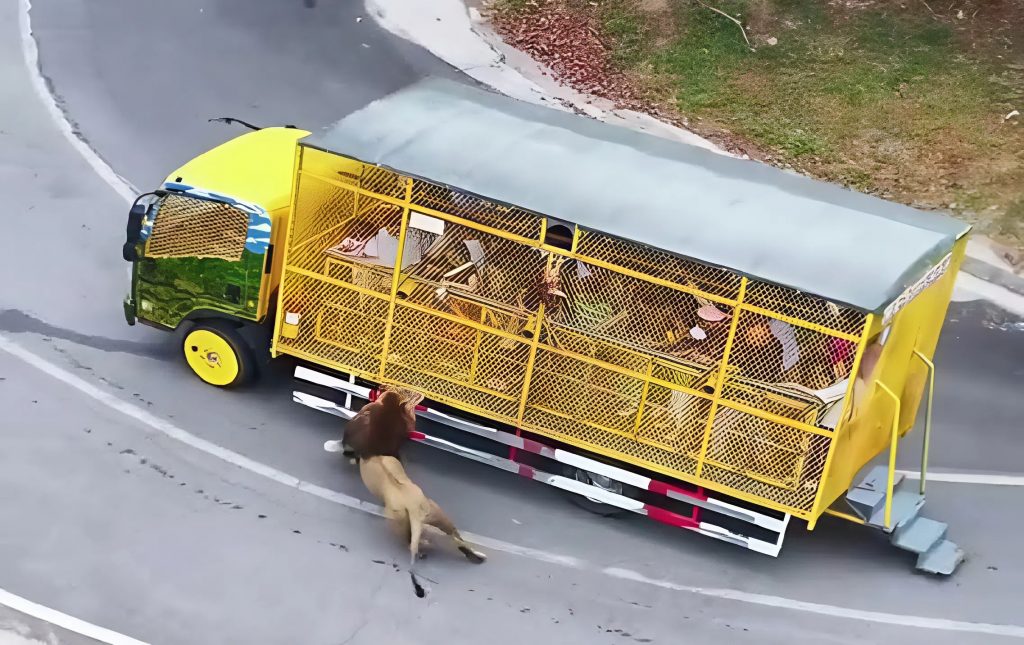When the lion sees its prey, it doesn’t just move — it explodes. Like an arrow shot from a bow, it launches forward with terrifying precision. Its powerful limbs pound the earth, each stride shaking the savanna with primal force. This isn’t merely a hunt — it’s a ritual. A silent yet ruthless moment shaped by millions of years of survival. One creature will live. The other won’t.
To many, the lion is the king of beasts — a symbol of power, nobility, and majesty. But beneath that royal image lies something darker, something raw. The lion doesn’t act without purpose. It waits. It watches. It calculates. Its amber eyes lock onto a single movement — a twitch, a stumble, a moment of weakness. That’s all it needs. It won’t waste a step. One wrong move could cost everything.
Every leap, every surge forward is evolution in motion. When the lion charges, time seems to stop. You’re no longer watching an animal — you’re witnessing a force of nature. Muscle, instinct, and silence wrapped into one devastating moment. The prey can run. Sometimes it escapes. But most of the time, it doesn’t.
What makes the lion even more terrifying is its psychological presence. Its roar, echoing across miles, isn’t just a sound — it’s a warning. A deep, bone-shaking announcement that the apex predator is near. Even when unseen, the lion’s presence is felt. Gazelles, zebras, buffalo — they don’t need to see it to know it’s watching. It might be far. Or it might be inches away. That uncertainty is paralyzing.
Unlike the cheetah, which relies purely on speed, the lion is a strategist. It doesn’t chase the strongest. It waits for the weakest. The tired. The distracted. It understands that energy is survival. And in the wild, reckless effort means death.
And never forget the lionesses. They are the true hunters, and their coordination is masterful. Their attacks aren’t chaotic — they’re calculated ambushes. They surround, deceive, divide. Every movement has purpose. Once you’re inside their trap, escape becomes a fantasy. They don’t just catch — they dominate.
Yet even the lion fails. Sometimes prey outsmarts the predator. A quick turn, a lucky kick, a sudden burst of speed — the savanna offers no guarantees. Even the king can lose. But these moments are rare. The rule is simple: when the lion hunts, it usually wins.

So why are we so captivated? Why do we watch, frozen, as predator meets prey? Because the lion represents something we both fear and admire — raw power, unstoppable momentum, the terrifying beauty of nature at its most unforgiving. It’s not just a beast. It’s a mirror. A reflection of something ancient inside us — the struggle, the hunger, the will to dominate or be destroyed.
And maybe, just maybe, behind those golden eyes, there’s more than instinct. Maybe there’s memory. Awareness. A silent knowledge older than we can imagine. We’ll never know for sure. But that’s what makes the lion more than a killer. It makes it a legend.
When the lion sees its prey, it doesn’t ask for permission. It doesn’t hesitate. It hunts. Not with honor. Not with mercy. But with certainty. While the prey’s heart pounds in panic, the lion’s heart beats to a different rhythm — the rhythm of the hunt. The only rhythm it’s ever known. The only one that matters.
